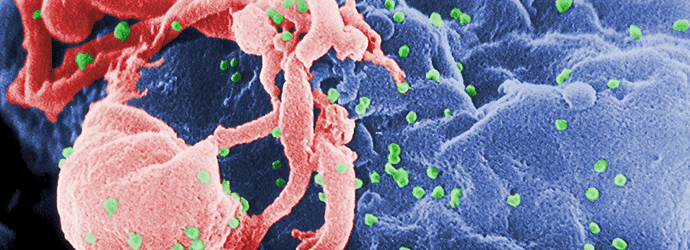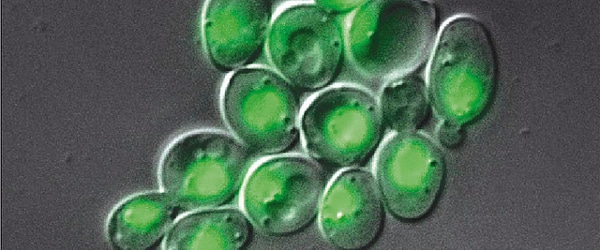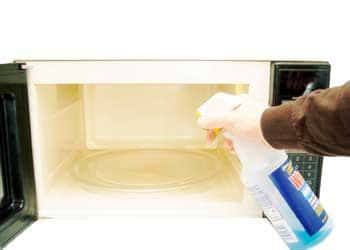The Why and How of Promoting Your Science Publication Online.
…paper: by email (to colleagues and peers) and of course on your personal social media accounts. Your institution may have social media accounts too, so you might ask them to…
Join Us
Sign up for our feature-packed newsletter today to ensure you get the latest expert help and advice to level up your lab work.

…paper: by email (to colleagues and peers) and of course on your personal social media accounts. Your institution may have social media accounts too, so you might ask them to…
…of social media. Emerge as a trailblazer in communicating and promoting your hidden treasure to the world! Create an Infographic for your Social Media Page Interact, interact, interact, now and…

…what you will use to select plasmids. In general, it can be split into rich media and minimal media. Rich Yeast Media Rich media are the ideal choice for yeast…

…Type of Cell Culture Media So now you know what is in most cell culture media, let’s discuss some of the most commonly used media. Table 1 summarizes some of…

…media like LB are safe to autoclave; Solid culture media containing agar are autoclaved first and poured into petriplates; Plant tissue culture media are autoclaved before use; Cell culture media…

…social media profiles. But are you allowed to share the full text? The answer isn’t always straightforward. This article explains why sharing your journal articles can be problematic and elucidates…

…acidic. To remove the old media, centrifuge at 150 x g for 5 minutes, remove acidic media, gently resuspend the cell pellet in warm media, and reseed in fresh media. …

…hours in the serum-free media. Gently aspirate the media (this will contain any plasmid-containing liposomes that did not transfect the HEK293 cells) and add 10 ml of complete media to…

…Terrific Broth (TB), Plasmid DNA Media (PDMR), and Autoinduction Media (ZYP-5052). These media formulations optimize E. coli cell growth and performance utilizing specialized carbon sources and phosphate buffering systems, and…

Have you ever wondered how the media can write (often cringingly inaccurately) about a recently published scientific paper? Attending the Standing up for Science media workshop organised by the Sense…

Culture medium is probably the most critical aspect of cell culture, and many media recipes and commercial media preparations are the results of years of refinement. One often-used supplement in…

…complete media to the same plate. Collect media again after 72 hours and combine with the media collected at 48 hours. Filter sterilize the combined collected media by passing it…

…media with phosphate just because there is no Tris left in your pantry. Please stick to the instructions or postpone the media-making until the required reagent is available. The Media…

…fluorescence microscopy: Autofluoresence from Media Rich media such a YPD is great for growing yeast, however if you are interested in flurorescent imaging this media isn’t a friend. This is…

…earphones to listen to relaxing music to escape the noise and excessive movement around you. 4. Neurodiversity and Social Convivence Because my different way of being and perceiving social rules,…

…first is to simply use a media that has a larger log-phase window (relative to cell density) than the relatively simple LB media. There are many formulations, with Terrific Broth…

…with Virkon, and for solid media, autoclaving seems to be the only good option. The microwave media prep method is certainly interesting. Weiss and Galande’s results seem to be pretty…

…animal milk or meat and are used in a number of different nutrient media for the growth of bacteria (also used in fungal growth media). R. Ribose – A sugar…

…RPMI 1640 are among the media commonly used when culturing macrophages from monocytes, with the addition of various supplements. Supplementation, like culture media itself, produces different outcomes in macrophage growth…

…up the nutrients in their media after a few days, and so the media will need to be changed. After the cells have been established at ALI, they cannot be…
…cell lines, the choice of culture media influences cell growth and, thus, antibody quality and yield. Laboratories often test a number of different media compositions for the cell line under…

…media. Before FBS 1882: Sydney Ringer became the first biologist to cultivate animal tissues in vitro. He was able to keep dissected frog hearts beating in a balanced salt solution…

…unused media, autoclaved media, old antibiotic stocks)? Have you ever considered if you are disposing of them appropriately? Read on to know what proper antibiotic disposal in the lab looks…

…attempt to split them. If they require media, add media to the flask. But keep some of the original media as this contains growth factors which will help the cells…

…grant applications, and graduate programs want students that can bring their own funding. Social Media: Twitter, Research Gate, LinkedIn, and so on Social media is a powerful tool for connecting…
…something that you love you boost your happiness levels and your productivity 4. Don’t neglect your personal and social life. Studies show that everyone feels happier when they socialize, including…

…soft agar). The stab tube will allow your inoculation loop reach deep down into the media where free oxygen is at a minimum. Inoculating liquid media in a test tube…

…bottom corner and add your media there. Now, pipette your trypsin-media mix directly onto your cell monolayer. Don’t blast the cells off the plastic, they should detach easily. If you’re…

…cultured in antibiotics, replace the media with antibiotic-free media before infection. If you ordinarily add antimycotics or other additives to your cell culture media, try to find out if these…

…with formulating and screening serum-free media. [5] [6] The FCS-free database has a wealth of information on various FCS- and animal-free media along with formulae to make in-house serum-free media….

…need is to be cautious when selecting a bacterial medium for your experiment. Don’t just consider the strain’s optimal media for growth, but also check the ideal media composition for…

…suitable brain imaging microscope. Growth media or saline-based media formulations such as DMEM, RPMI, and Leibovitz L-15 are widely used in live-cell imaging experiments. The growth media solutions are formulated…

…There are preformulated growth factor mixes that can be added into media stocks and premade bottles of media available commercially, although this is for a limited range of organs (for…

…and wash with cold sterile water to remove any traces of glucose. Transfer the cells in induction media (appropriate drop-out media + galactose) and let them grow for at least…

…the window when you’re thesis writing is your social life. Even if you have no responsibilities other than to get your thesis written and submitted on time, your social life…

…or MgSO4 can improve the growth of your cultures, especially if you use basic media such as LB broth. Some other media, such as SOB and SOC already contain magnesium,…

…would with growth media. Plate your cells at your normal confluency (~10%) onto the surface of your coverslips. It will take ~400 to 500 µl of media to cover your…

…tools, read our article on How to Speed Up Your Literature Searches by Crawling. Social media is also another very important tool for finding and keeping up with the latest…

…size, volume of media, replicate number, treatment conditions and number of plates will influence the amount of radioactivity you need to order. Also when ordering radioactivity, make sure you know…

…Oil 1.51 Glass 1.52 Mowiol (Mounting Media) 1.41-1.49 Vectashield (Mounting Media) 1.46 Flourmount (Mounting Media) 1.40 Fresh Prolong Gold (Mounting Media) 1.39 1-day-old Prolong Gold 1.40 4-day-old Prolong Gold 1.44…

The eBook with top tips from our Researcher community.